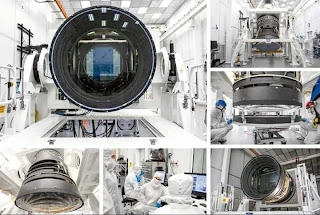World’s largest digital camera will be used for astronomy research. It’s taller than a car and has 266 pixels, the same as an iPhone.
Over the next 10 years, this camera will help researchers study the billions of galaxies in space.
The world’s largest digital camera, 1.65 meters long, was unveiled at the SLAC National Accelerator Laboratory in California.
By the end of 2024, this camera will be installed at the Vera C. Rubin Observatory on the top of Cerro Pachon in Chile.
This place is in the Andes Mountains. As part of the Legacy Survey of Space and Time (Legacy Survey of Space and Time) or LSST project, 20 billion galaxies will be cataloged with this camera over the next 10 years.
The LSST camera will collect 15 terabytes of data per night. These data will enrich our knowledge of the universe, provide researchers with new insights into the nature of mysterious dark matter, and clarify our understanding of the universe’s structure.
This LSST camera, however, works like any other digital camera. But it is very large in size.
It has 189 sensors that collect light from celestial bodies such as stars and convert it into electrical signals, which can be used to create digital images.
Each square sensor is 42 millimeters long. This one sensor has more pixels than the iPhone 13. That means in total 3.2 gigapixels will be available in this camera.
A golf ball can be clearly seen from a distance of 24 km with this camera. And the diameter of its lens is 1.57 meters, it is the largest lens in the world.
The outermost lens of the camera is visible in the top left of the cover image. There are 189 sensors arranged like a blue mosaic. Right, top and middle images show the camera with the lens cap.
The image below shows the entire 3 ton camera (left and right). Researchers wear protective clothing to prevent damage to the camera’s electronics (center).


